Liposuction in Guadalajara
Search and Compare the Best Clinics and Doctors at the Lowest Prices for Liposuction in Guadalajara

Find the best clinics for Liposuction in Guadalajara
With Medijump you can browse 2 facilities offering Liposuction procedures in Guadalajara. The cheapest price available is $1,053 in Monterrey
Liposuction in Mexico
Price: $ 1,053
Liposuction in Monterrey
Price: $ 1,053
Liposuction in Guadalajara
Price: $ 1,148
Ukraine offers the best prices Worldwide
Price: $ 120
From 16 verified reviews
Jose Luis Vivanco, 17 September 2019
Plastic surgery with the best Doctors, unique attention with a comprehensive treatment of patients.
From 12 verified reviews
Karina Ortiz, 07 May 2018
I had surgery 3 weeks ago and everything was great, excellent doctors, nurses, facilities and treatment.
Compare Before & After Photos of _procedure_photos.phpLiposuction
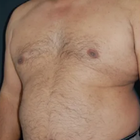
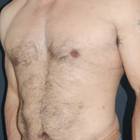
Front view

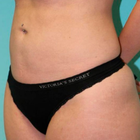
Half-side view
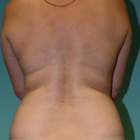
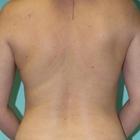
Full-side view
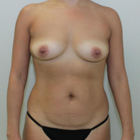

Front view
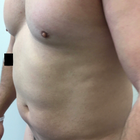

Half-side view
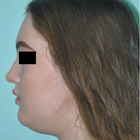
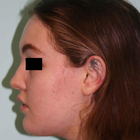
Full-side view
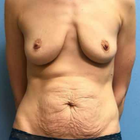

Front view
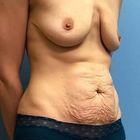

Half-side view
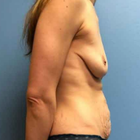

Full-side view
WHY US?
At Medijump, we're making medical easy. You can search, compare, discuss, and book your medical all in one place. We open the door to the best medical providers worldwide, saving you time and energy along the way, and it's all for FREE, no hidden fees, and no price markups guaranteed. So what are you waiting for?

Free

Best Price

Widest Selection

Risk-Free
What you need to know about Liposuction in Guadalajara?

Liposuction is a cosmetic surgery that “sucks” out fat from areas that are hard to lose through a healthy diet and exercise, while liposculpture is the shaping of the skin back to its desired shape. Both are done in conjunction with one another at the same time. Most areas can be treated. Traditionally the most popular areas to treat are the stomach/abdomen, chin and neck, love handles, arms, and inner and outer thighs. Becoming more popular are the knees, calves and ankles, all with very successful results.
While liposuction can permanently remove fat cells and alter your body shape, it should not be viewed as a quick fix for individuals who are significantly overweight. The procedure works best for those who have already lost some weight themselves and are close to their ideal weight but need help tackling stubborn areas of fat in problem areas.
What is the cost of Liposuction in Guadalajara?
When you're thinking about liposuction in Guadalajara, one of the first things you probably wonder about is the cost. Here's the thing: the price isn't the same for everyone. It hinges on a few details like how many parts of your body you’re getting treated, how complex the treatment is, and the professional fee of your doctor. Costs for anaesthesia and the use of the surgical facility are also added to the bill. It's vital to remember, too, that because liposuction is often carried out for aesthetic reasons, normal health insurance might not cover it.
Can Liposuction be used as a weight-loss method?
Unwanted fats are very hard to get rid of especially if you are not a fan of exercise or diet. Liposuction, also known as Lipoplasty, liposculpture suction, lipectomy or simply lipo, basically eliminates unwanted fats by suctioning it away. Despite the growing trend of non-invasive fat reduction treatments, liposuction is still the leading procedure to remove stubborn fat cells.
Liposuction permanently removes fat cells and enhances the shape of your body. A plastic or dermatologic surgeon usually performs this type of procedure on the patient’s belly, hips, thighs, buttocks, arms, back or face to improve their shape. Furthermore, liposuction can be done together with other plastic surgeries such as facelifts, breast reductions, and tummy tucks.
This treatment procedure is particularly used for aesthetics, mainly to improve a person’s appearance. In most cases, maintaining and achieving such positive results will depend on your lifestyle.
What does a Liposuction Procedure Involve?
Before you have the treatment, a series of tests are required to ensure if you are fit for the surgery. You will also need to sign a consent form to confirm that you are fully aware of the risks, benefits and possible alternatives to the procedure.
You will likely be put under using general anesthesia, which can last for 1 to 4 hours. An epidural can also be used for procedures on the lower part of the body, although this is becoming increasingly unpopular now. Alternatively, you may be given local anesthesia if the procedure will be on small areas of your body. You may be asked to stand up during the procedure to ensure proper fat removal, but you will not feel any pain.
Tiny incisions will be made in the areas of interest through which a cannula can fit. This thin tube-like device is connected to a vacuum, capable of suctioning the fat from within your body. There are a few common techniques used, including Laser-Assisted or SmartLipo, UAL (Ultrasound-Assisted Lipo) or the most popular technique, Tumescent Lipo - this involves the pre-injection of a saline solution to help separate the fat from the blood, so less blood is removed. You'll discuss the best option with your surgeon before confirming what type of Liposuction is best for you.
How Long Should I Stay in Guadalajara for a Liposuction Procedure?
Generally, patients who have received general anesthesia will be required to spend the night in the hospital (in-patient). Patients, who have had local anesthesia, may be able to leave the hospital on the same day.
After the operation, you will have to wear support bandages (support corset, bandages or elasticated support) whilst healing. Expect some pain, swelling and bruising during the following days and weeks. Your surgeon will prescribe medication to help control your pain and antibiotics to reduce the risk of infection. Furthermore, your stitches may be removed during your follow-up appointment with your surgeon. You should expect to stay in Guadalajara for about a week post-op to allow for the initial recovery and check-up appointments, which will include the removal of stitches.
What's the Recovery Time for Liposuction Procedures?
Numbness in the specific area of your body where the fat was removed is to be expected for the first couple of weeks, usually, this will improve after 6 to 8 weeks. You may also need to wait a few days before going back to work. As for your normal activities, especially exercise, you may have to wait a few weeks before resuming.
Overall, the recovery time may vary from patient to patient. In most cases, patients can return to light activities within 2 to 3 days and are also able to go back to work after two weeks. As for the results, you may see visible results after 3 to 4 weeks, however, it can take several months before you see the final outcome.
What sort of Aftercare is Required for Liposuction Procedures in Guadalajara?
Just like any other cosmetic surgery, following your surgeon’s aftercare instructions is vital in achieving and maintaining the best results. If the procedure was done above your waistline, you may be advised to sleep propped on pillows to have elevation on the specific area. This helps drain the fluids and prevent them from pooling. Furthermore, applying cold compress on a certain area where the procedure was performed is highly recommended, this will reduce inflammation and bruising especially during the first few days.
What's the Success Rate of Liposuction Procedures in Guadalajara?
Liposuction remains one of the most popular cosmetic surgeries with a success rate of 85%, offering patients the enhanced body shape they've been craving. However, just like any other surgeries, it also comes with possible risks. Complications vary and are dependent on the procedure is as well as your surgeon’s skills. Possible risks and complications include:
- Severe bruising
- Inflammation
- Blood clot forms in veins, causing inflammation and complications (Thrombophlebitis)
- Kidney or Heart problems - changes in the body's fluid levels during the procedure may cause kidney or heart problems.
- Pulmonary embolism - when fat gets into your blood vessels and travels to your lungs, eventually, blocking your lungs.
Are there Alternatives to Liposuction Procedures in Guadalajara?
CoolSculpting – is a fat freezing liposuction alternative. This is more suited to people who are close to their target weight but still have unwanted pockets of fat. Coolsculpting is a fat-freezing procedure that crystalizes your fat cells until they break apart painlessly.
Ultrashape - a non-invasive procedure that doesn’t require the need for anesthesia. This treatment procedure will make use of a body sculpting device that vaporizes fat cells within the targeted area with waves of ultrasound energy. Fat cells are permanently flushed out of your body, giving you a more natural-looking fat loss.
How does Liposuction differ from CoolSculpting and Vaser liposuction in terms of technique?
Liposuction vs Vaser Liposuction
Like traditional liposuction, the purpose of Vaser liposuction is to change the contours and shape of the body by removing persistent fat deposits. The word Vaser is actually an acronym for Vibration Amplification of Sound Energy at Resonance. This specialized ultrasound technology breaks down the fatty tissues using ultrasonic frequency waves, which is why it's often referred to as Ultrasonic Liposuction or Ultrasound Liposuction.
Liposuction vs CoolSculpting
CoolSculpting is the new non-invasive, freezing method used to also change the body contours and shape, however, this method does not require the use of a cannula so there is no damage to the overlying skin. Instead, it involves the controlled application of cooling localized fat deposits, which are then expelled from the body through the kidneys.
How safe is Liposuction in Guadalajara?
Liposuction, when performed in Guadalajara by a qualified and experienced plastic surgeon, is generally considered safe. The procedure has evolved significantly since its introduction, with advancements in technology and techniques contributing to its safety profile. Most liposuction procedures are performed without major complications, and patient satisfaction rates are high. However, as with any surgery, there is always an inherent risk.
It's crucial to have a detailed discussion with your surgeon regarding the safety of the procedure. The surgeon should be open about potential risks and complications, and explain how they would handle them should they arise. Factors such as your overall health, medical history and the area or the amount of fat being removed can influence the risks associated with liposuction.
What Should You Expect Before and After a Liposuction?
After your surgery, expect some swelling and discolouration in the areas where the fat was removed. To assist in healing and lessen swelling, you'll be given a snug garment to don. It is advisable to arrange for someone to take you home after the surgery and be with you for the initial day after the procedure. Though some changes will be noticeable soon after the surgery, the best results will take shape once the swelling has fully dissipated, which usually takes around 3-6 months. Regular check-ins with your surgeon are vital to ensure your recovery is progressing as expected.
As the wise saying goes, "Your waistline is your lifeline." Liposuction does remove fat cells for good, but weight gain post-procedure can cause the leftover fat cells to grow, potentially in different areas of your body. Therefore, a balanced diet and regular exercise are crucial for maintaining your new silhouette.
How Can I Prepare for Liposuction in Guadalajara?
Prepping for a liposuction surgery in Guadalajara? You've got this! Here are some absolutely essential steps you should follow for a smooth and successful procedure:
- Consultation: First things first. Have an in-depth consultation with your plastic surgeon. They'll assess your health status and discuss your goals. Taking this information into account, they'll provide some key instructions for you leading up to the surgery day.
- Healthy Lifestyle: In preparation for the procedure, it's of utmost importance to maintain a healthy lifestyle. Get in regular exercise. Eat balanced meals. Hydrate frequently. If you smoke, now is the time to quit. And hold off on alcohol. Your body will be on the fast track to healing, thanks to these healthy habits.
- Follow Instructions: Your surgeon will give you a set of preoperative instructions. Avoiding certain medications or supplements might be on the list. Stick to these guidelines religiously.
- Support Person: And lastly, on surgery day, make sure to have a trusted friend or relative by your side. Once the procedure is completed, you'll need a safe ride back home.
Whilst the information presented here has been accurately sourced and verified by a medical professional for its accuracy, it is still advised to consult with your doctor before pursuing a medical treatment at one of the listed medical providers
No Time?
Tell us what you're looking for and we'll reachout to the top clinics all at once
Enquire Now

Similar Procedures in Guadalajara
Prices Start From $31

Prices Start From $120

Prices Start From $120

Prices Start From $120

Prices Start From $120

Prices Start From $31

Prices Start From $120

Popular Procedures in Guadalajara
Prices Start From $111

Prices Start From $931

Prices Start From $76

Prices Start From $236

Recommended Medical Centers in Guadalajara for Liposuction

- Interpreter services
- Translation service
- Religious facilities
- Medical records transfer
- Medical travel insurance
- Health insurance coordination
- TV in the room
- Safe in the room
- Phone in the room
- Private rooms for patients available

- Interpreter services
- Translation service
- Religious facilities
- Medical records transfer
- Medical travel insurance
- Health insurance coordination
- TV in the room
- Safe in the room
- Phone in the room
- Private rooms for patients available

- Interpreter services
- Translation service
- Religious facilities
- Medical records transfer
- Medical travel insurance
- Health insurance coordination
- TV in the room
- Safe in the room
- Phone in the room
- Private rooms for patients available

- Interpreter services
- Translation service
- Religious facilities
- Medical records transfer
- Medical travel insurance
- Health insurance coordination
- TV in the room
- Safe in the room
- Phone in the room
- Private rooms for patients available

- Interpreter services
- Translation service
- Religious facilities
- Medical records transfer
- Medical travel insurance
- Health insurance coordination
- TV in the room
- Safe in the room
- Phone in the room
- Private rooms for patients available

- Interpreter services
- Translation service
- Religious facilities
- Medical records transfer
- Medical travel insurance
- Health insurance coordination
- TV in the room
- Safe in the room
- Phone in the room
- Private rooms for patients available
Liposuction in and around Guadalajara
About Guadalajara
Guadalajara is the second-largest city in Mexico and lies at the heart of the Mexican state Jalisco. The City takes great pride in being the Silicon Valley of Mexico due to the phenomenal growth of its infrastructure, economics, technology, and software in the last three decades. The city is also rich in tradition, culture, and history. It is also home to the world’s famous tequila and mariachi festival
Mexico is also a popular destination for medical tourism. It has more than a dozen cities and border towns specializing in medical care. Guadalajara is one such city and is largely visited by medical tourists from across the world. In particular, a large number of Americans cross the border to seek medical assistance. Low medical cost is the main reason behind the City's immense popularity and makes Guadalajara an ideal destination for medical tourism. Bariatric surgery is 70% cheaper than in the USA and dental procedures are 60% less expensive.
The world-class hospitals in Guadalajara offer a wide range of medical services including general surgery, plastic surgery, infertility, stem cell therapy, pediatrics, oncology, and orthopedics. The highly qualified doctors and nurses provide the highest level of care, service, and hospitality and are also well versed in English. Guadalajara is not only a perfect choice for medical treatments and procedures but also the best spot for recuperation.
Salutaris Medical Center, San Javier Hospital, the fertility institutes, OLA Obesity & Advanced Laparoscopic Surgery Clinic, and the Mexico Americano are some of the better-known hospitals in Guadalajara. They have access to the latest medical procedures and cutting-edge technologies.
Popular areas in Guadalajara
The Metropolitan area of Guadalajara houses approximately 5 million people. The city has a handful of safe and trendy neighborhoods. You will find a large population of expatriates in areas like Providencia, Lake Chapala, Ajijic, Chapalita, Chapultepec, and Zapopan. The neighborhoods have many upmarket restaurants, bars, cafes, boutiques, and authentic Mexican food stalls. Lake Chapala is a picturesque lake, from where you can take a cruise to the beautiful island of Scorpio.
- Guadalajara Cathedral: The centuries-old Cathedral lies in the Plaza De Armas, Zona Centro, and although not a particularly big or extravagant Cathedral, it was built in 1541 in the old Spanish colonial style with its neo-gothic spires.
- Expiatory temple: This is the finest religious structure built in a neo-Gothic style. The church has a lavishly embellished exterior. The unique German clock and fine stained-glass windows never fail to fascinate its visitors.
- The Government Palace: Located at the Plaza De Armas, the splendid palace is an absolute visual treat. It took almost a century to construct this historical landmark. The old staircase and murals depicting the heroes of the war of independence are the highlights.
- The regional museum of Guadalajara: The museum is worth a quick visit. 14 dioramas, local fossils, and 800 kg meteorite are the major attractions.
- Avenida Chapultepec: You can experience the best nightlife here as there is a selection of bars with salsa dancing, hula hooping, and Mexican folk dance.
Weather and Climate in Guadalajara
Guadalajara has a warm and moderate climate. The City’s elevation ensures cooler evenings. The weather is spring-like for most of the year. Guadalajara's average temperature is 19.5°C. The average annual rainfall is 941 mm. During the month of August, the City receives a generous amount of rainfall.
March is the driest month of the year with little to no precipitation at all. The warmest months of the year are April, May, and June and the temperature can reach 35°C.
December and January are cooler with an average temperature of 25°C. The temperature may fall too even 5°C during the nights. If you are planning to visit the City during the winter, then pack suitable warm clothing to withstand the cold.
Getting around in Guadalajara
Located 16 km away from the city center, is Guadalajara International Airport. It is Mexico's third busiest airport. The airport handles cargo flights and domestic flights to other Mexican cities and the USA. Wider transport options are available to cater to the needs of the locals and the tourists. The city is well connected by various modes of transportation.
- By foot: As Guadalajara is quite compact, you can simply walk around the city. The city center houses most of the tourist spots. The streets are hassle-free and relaxed.
- By bus: Macro-buses, which are large in number, are the cheapest means of transport. It costs less than 50 cents for a one way to travel in a macro-bus. In case of TUR express buses, the cost is exactly 50 cents one way. If you are a regular commuter, you can buy a transit card and swipe every time you board the bus.
- On a Metro: Most office goers prefer the metro services. You just need to pay 40 cents for a minimum distance ride.
- Other Options: You can also rent bicycles, taxis, and cars to travel to nearby cities. A valid US driving license is more than enough to drive a car here.
Tourist Visa in Guadalajara
A valid tourist visa is essential to visit Mexico. Citizens from countries like India, Russia, and China should apply for a Mexican Tourist Visa, 28 days before the date of entry. You should also submit copies of your travel tickets. Visa fee may cost you approximately USD 22 but this is subject to change from time to time.
Mexico provides visa exemption to the citizens of 67 nations. Citizens of Canada, USA, Denmark, Germany, Switzerland, and Japan can enter Mexico without a valid tourist visa and can stay for a period of 6 months.
You can even extend your stay by providing the required documents before your visa expires.
Additional Information
- Mexican Peso is the official currency of Mexico. 1 USD equals 18.77 Mexican Peso.
- Being the native language, people throughout Guadalajara speak Spanish. Yet, most of the locals can speak English.
- You will find plenty of banks and ATMs across the city. Most restaurants and big shops accept payments by credit cards.
- A large majority of the population residing in Guadalajara are Roman Catholics.
- Public holidays in Guadalajara:
- New Year's Eve (January 1)
- Independence Day (September 16)
- Revolution Day (Third Monday of November)
- Three King's Day (January 6)
- Easter
- Mother's Day.
Popular Searches
- Plastic Surgery in Thailand
- Dental Implants in Thailand
- Hair Transplant in Thailand
- Breast Augmentation Thailand
- Gastric Sleeve in Thailand
- Gender Reassignment Surgery in Thailand
- Laser Hair Removal in Bangkok
- Botox in Bangkok
- Dermatology in Bangkok
- Breast Augmentation in Bangkok
- Coolsculpting in Bangkok
- Veneers in Turkey
- Hair Transplant in Turkey
- Rhinoplasty in Turkey
- Stem Cell Therapy in Mexico
- Rhinoplasty in Mexico
- Liposuction in Mexico
- Coolsculpting in Tijuana
- Rhinoplasty in Korea
- Scar Removal in Korea
- Gastric Sleeve in Turkey
- Bone Marrow Transplant in India
- Invisalign in Malaysia
- Plastic Surgery in the Dominican Republic
- Tummy Tuck in the Dominican Republic
- Plastic and Cosmetic Surgery in Poland
- Rhinoplasty in Poland
- Hair Implant in Poland
- Dental Implants in Poland
- IVF in Turkey

